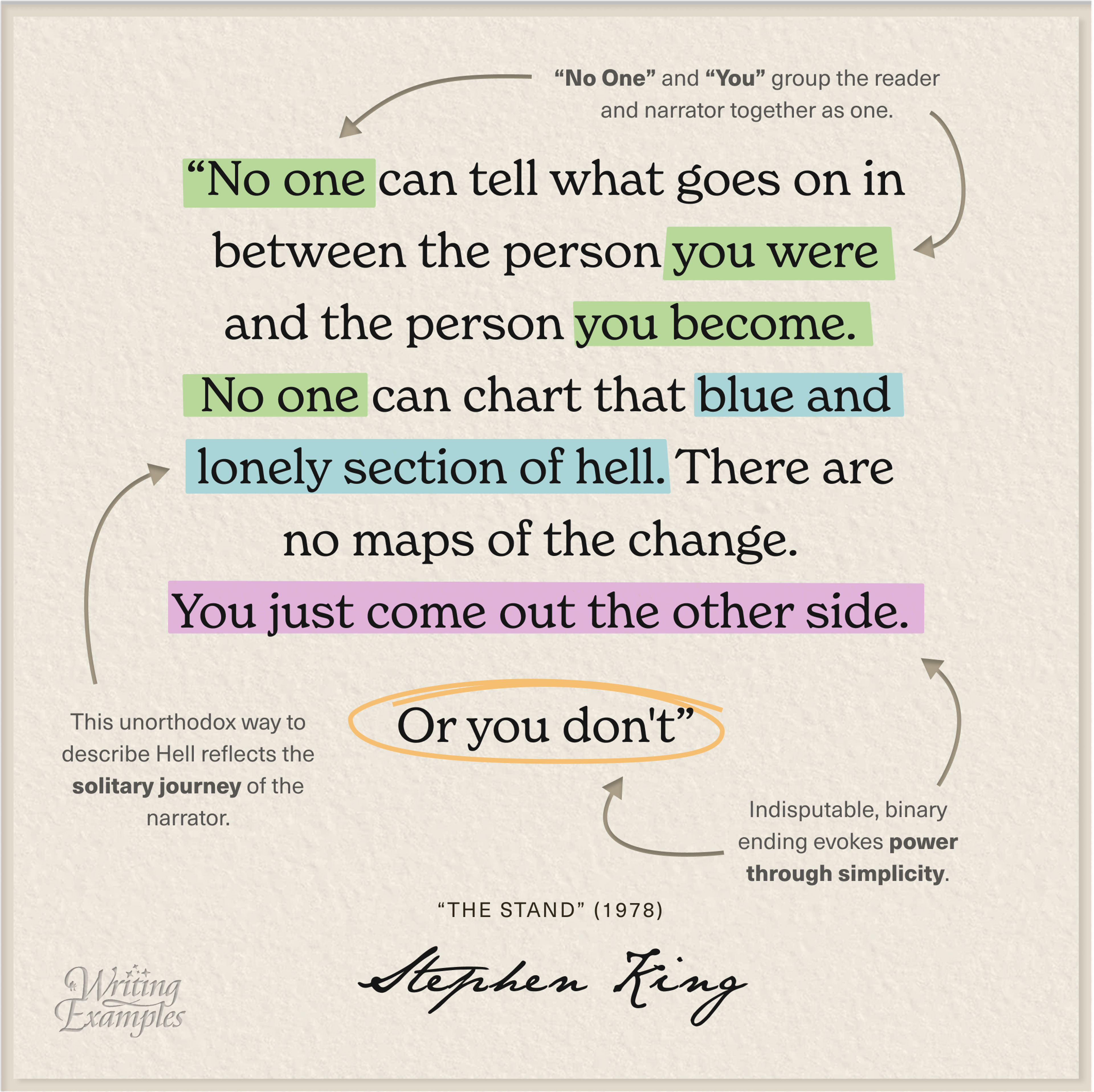HOW TO
Make a CharacterReal


t’s hard to find realism in a world of horror, fantasy, or science fiction, but this is what Stephen King’s books do best: humanize so acutely, that when horrific, inhuman things begin to occur, we feel as though we know the characters involved on such a genuine level, that the unreality becomes authentic.
The passage above describes Larry, a character in the midst of a struggle with alcoholism. The way King frames this conflict, however, is not just with booze, but with the universal darkness we all must face at some point – whether that darkness comes in the form of supernatural terror or all too natural addiction.
The writing itself is conversational – illustrating the point that horror comes in all forms. It’s colloquial yet elegant; ubiquitous yet particular – setting the tone for real characters existing with real problems – thus allowing the unreal horrors of King’s mind to feel as believable and terrifying as the basic human vices we all face.
When prose and characterization align in sophisticated simplicity, the writing itself comes to life. There is no flowery pretension. No trick or turn of phrase. It’s truthful writing. It’s real.
Even when it isn’t.
Read More
Write like the Greats
New Writing Examples, right in your inbox.
“Beautiful, playful, and high-quality. Kudos.”
Clayton
from Missouri, USA



